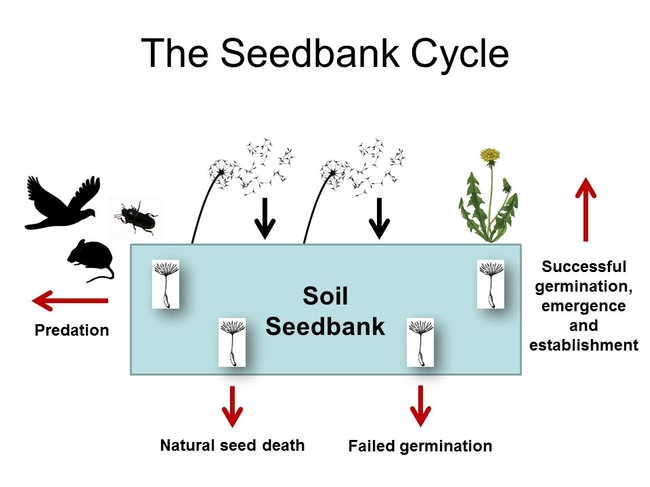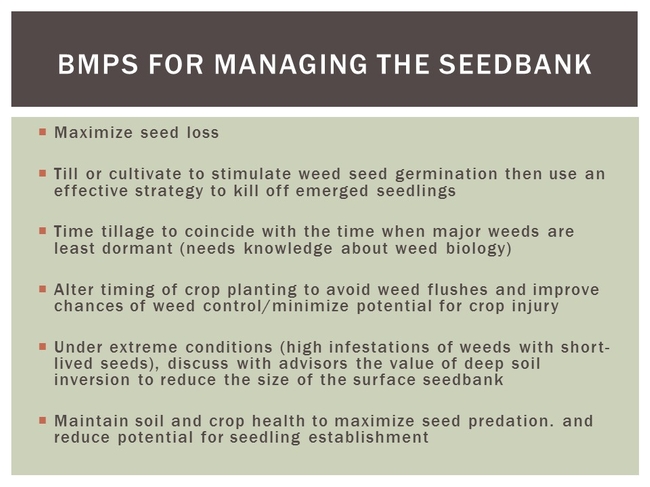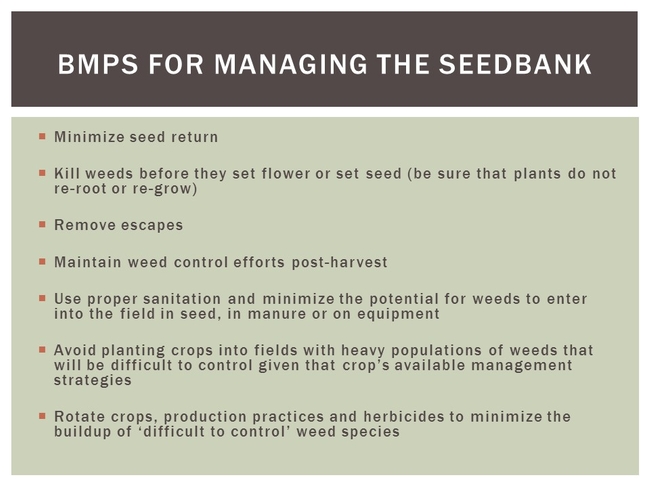When we think about weed control in crop production, we often think about 'short-term' result, i.e. weed control after 30 days, weed control after 60 days, weed control at harvest, etc. But weeds and weed control efforts in one crop can significantly influence the density and composition of weeds in following years. The carryover between commodities and seasons is accomplished via the weed seedbank, which serves, in my opinion, as the memory of crop production practices. Weed control successes and failures are reflected by changes that occur in this genetic reservoir. In good years, weeds are successfully controlled and few to no seeds enter the seedbank; in bad years, when weeds escape management strategies, rogue plants flower, set seed and contribute to the seedbank.
Figure 1. The soil seedbank cycle
Why should we worry about the seedbank? It's a numbers game, really. The more seeds that are present --->>> the greater the potential number of germinating seeds/emerging seedlings --->>> the greater the potential for weed control escapes. Weed escapes necessitate that growers engage in additional management practices that may have been unplanned and that add to the cost of crop production. NOTE: this isn't to suggest that growers shouldn't diversify with respect to weed management tools (i.e. using crop rotation, cultivation, herbicides, etc...), rather, it it means that these unintended occurrences can place an additional burden on a producer. Increased seedbank/in-field weed densities could also facilitate the development of herbicide resistance. According to Jasieniuk et al. (1996), where weed infestations are heavy, the probability of selecting for resistance can be high, even if the mutation rate (that leads to the development of resistance) is low.
Figure 2. A recreation of some data presented in Jasieniuk, M., A.L. Brule-Babel, and I.N. Morrison. 1996. The Evolution and Genetics of Herbicide Resistance in Weeds. Weed Sci. 44: 176-193
If you really want to reduce the seedbank, you'll need to attack it on multiple fronts i.e. maximizing seed loss (Figure 3) and minimizing seed return (Figure 4). Regardless of your management strategies, vigilance is key! Weeds are especially adaptive and lapses in control can cause significant setbacks. Good luck!
Figure 3. Best Management Products (BMPs) for maximizing seed loss.
Figure 4. Best Management Products (BMPs) for minimizing seed return.



